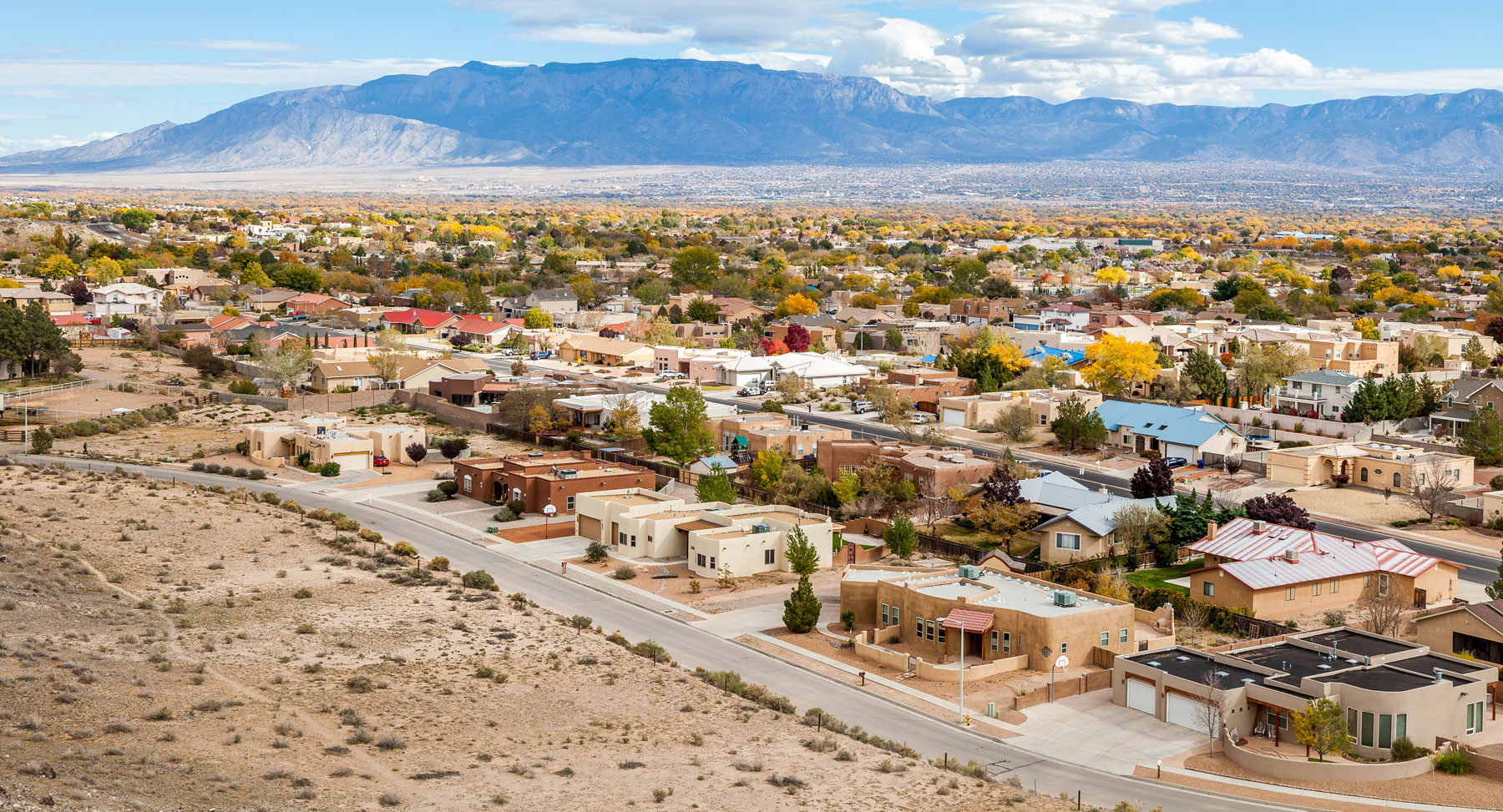New Mexicans see the effects of climate change every day.
Stream flows in the Rio Grande and other rivers are diminished; water supplies have been reduced as reservoir levels drop; wildfires and insect infestations have devastated the forests; and agriculture is grappling with decades of high heat, prolonged drought, and intense competition for increasingly scarce water across the state.
New Mexico’s state tree, the beloved piñon pine, suffered an extreme die-off due to climate change in the early 2000s and continues to be threatened. Across the West, an estimated 350 million piñons have been lost to severe heat, drought, and bark beetles.
Scientists have found that more than 9% of methane produced in the region is leaked to the atmosphere, primarily from four fossil-fuel gas production sites. The U.S. Environmental Protection Agency has estimated only 1.4% is emitted in oil and gas production nationally.
The climate data is indisputable. In the last 45 years, the average annual temperature in New Mexico has increased by 2.7° Fahrenheit, making it the sixth-fastest-warming state in the nation. Without urgent action, the average temperature is projected to rise between 3.5° and 8.5° Fahrenheit by 2100.
WRA played a leading role in New Mexico’s 2019 passage of signature climate legislation, the Energy Transition Act, and the state has made progress in establishing ambitious renewable portfolio standards that culminate in a zero-carbon goal by 2045. With strong commitments from the state’s largest utility, PNM, to achieve net-zero emissions by 2040, all utilities across the state are on track to meet the 40% renewables goal by 2025.
Coal-fired power plants are closing and being replaced with cheaper, cleaner renewable energy generation facilities. The passage of a comprehensive statute that created securitized financing for retiring coal plants, worker training programs, and investment in communities affected by coal shutdowns has enabled the state to make real, measurable progress in moving toward a clean energy economy.
With the help of WRA, the state also passed a law to move away from election of Public Regulation Commission members to a system of appointed commissioners, to reduce the politicization of the agency.
WRA is also working to gain approval for projects to encourage the transition to electric vehicles and to modernize electric facilities. More transmission will allow utilities to develop wind generation in an area east of Albuquerque known as the “Saudi Arabia of Wind.”
Once transmission capacity is improved, New Mexico will be a critically important supplier of power not only to New Mexico customers but to customers across the West. Except for New Mexico’s thriving film industry, the renewable energy industry is considered the biggest new revenue generator with the greatest potential for growth in the state.
While New Mexico faces daunting challenges in the grip of climate change impacts, the state is making steady progress toward achieving its renewable energy goals.

Transitioning the Power Sector in New Mexico
Sunny, windy, innovative New Mexico is well poised for the transition to renewable power generation, in no small part because of the Energy Transition Act, which was enacted in 2019 with critical support from Western Resource Advocates.
The law requires utilities in New Mexico to shift entirely to zero-carbon resources by 2045 and provides economic assistance for affected communities, creates a displaced workers assistance fund, and requires companies building renewable generation facilities to hire apprentices, among other provisions.
The act also created a securitized financing framework to refinance utilities’ debt obligations and give ratepayers long-term savings on the costs of transitioning to clean energy.
As a result of the act and the clear economic advantages of renewable energy generation, PNM has scheduled the shutdown of a coal plant in 2022 and plans to exit a second coal plant.
New Mexico’s great potential for wind and solar power generation enable the state to become a major source of clean power for energy-hungry California. Strategies for building the infrastructure necessary for transmission from eastern New Mexico to California are under discussion, with scientists from the national energy laboratories in Sandia and Los Alamos providing critical expertise.
A key achievement by WRA in 2020 was the passage of a ballot measure to amend the state Constitution so that members of the Public Regulation Commission would be appointed by the governor rather than elected by popular vote. Effective in 2023, the change will encourage the appointment of commissioners with expertise in energy and power generation and will help New Mexico lead the Southwest in a rapid transition to clean energy.

Years Of Success Working On Clean Energy In New Mexico
2019
Transition from Coal
Secured passage of the Energy Transition Act and played a key role in ensuring that the act is fully applied to facilitate the permanent retirement of San Juan Generating Station.
2013
Efficiency Investment
Expanded energy efficiency investments in New Mexico by developing and securing a policy requiring 3% of utility revenues be directed toward energy efficiency, resulting in $40 million per year in efficiency investments.
2013
Regional Haze Rule Settlement
Brokered an agreement with governments, Indigenous nations, and environmental groups that called for PNM to close 50% of the San Juan Generating Station by 2017. These retirements would reduce greenhouse gas emissions by roughly 6 million tons per year, improve health for Indigenous communities, and increase visibility in Mesa Verde National Park and Bandelier National Monument.
2012
Innovative Rate Design
Proposed and gained regulatory approval of an innovative design for electricity rates in New Mexico, rewarding energy efficiency, discouraging high levels of electricity use, reducing air pollution, and improving public health.
2011
Energy Conservation Strategy
Developed and gained adoption by the New Mexico Public Regulation Commission of an innovative electricity rate design encouraging conservation and investment in energy efficiency in New Mexico.
2009
Energy Efficiency
Influenced New Mexico legislation that increased funding for energy efficiency by $10 million.
2008
Energy Demand Reduction
Amended New Mexico energy efficiency legislation to require utilities to implement cost-effective measures to reduce electrical demand and set minimum standards for energy savings.
2007
Rural Energy Emphasis
Helped secure legislation in New Mexico doubling the amount of energy provided from renewable sources, including rural electric cooperatives for the first time.
2006
Solar Power
As part of the Coalition for Clean Affordable Energy, secured a new state tax credit and utility incentive program in New Mexico making solar energy more affordable. The new program paid customers 20.5 cents for each kilowatt-hour of electricity generated from solar.
2006
Climate Risk Calculation
Forged a new agreement with PNM on a framework for factoring climate change risk into the company’s decision making.
2005
Solar Incentives
Developed an incentive program with conservation partners and PNM to buy and install solar panels.
2004
Renewable Portfolio Standard
Helped secure passage of the Renewable Energy Act and assisted the New Mexico Public Regulation Commission in implementing renewable portfolio standards for all three investor-owned utilities in New Mexico.
2003
Wind Power
Boosted consumer demand for wind power in Colorado, Utah, and New Mexico, helping a new 204-megawatt wind farm in New Mexico come online.

